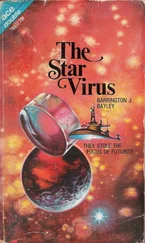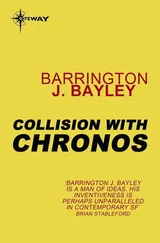Reluctantly Rachad picked up the volumes. “You talk of what you will do—yet none of us can even leave the Aegis!”
“As to that, we shall see.”
Wolo beckoned him. Rachad followed, then turned back to Amschel. “If Master Gebeth were to study these, could he make the Stone?”
“I think not, from what you have told me. For one thing, he would not be able to duplicate my equipment.”
“It saddens me to think that his search was hopeless from the start.”
“Nothing is ever completely hopeless,” Amschel said.
* * *
According to tradition there were three methods of attaining the Hermetic goal. The first was the slow method, in which the subject had to be enclosed in a sealed vessel and heated over a period of years. The second method, conducted in an open crucible, was quicker but more dangerous. And finally there was the instant or lightning method, about which tradition said very little except that the adept had first to master forces of a colossal order and that therefore it was the most dangerous of all.
The lightning method was the path Amschel had adopted. Once his assistants had helped him to make the final preparations he had sent them away for their own safety, through the inner maze to seek the protection of King Lutheron. He was now alone in the laboratory, ready to put the instructions embodied in The Root of Transformations to the test.
The infusorators, along with the accumulators and giant capacitors that accompanied them, had all been raised to their highest possible pitch; they could scarcely contain their pent-up energy. The great cucurbit Amschel had chosen to be the scene of the drama hummed loudly on low charge, the ten-foot globe’s interior almost enmeshed in the iron and silver arrays that were designed to deliver precise patterns of etheric heat into the transmutation area.
The load of azoth , impregnated with all the elements it lacked as primus agens so that it was dominated by none, had already been introduced into the vessel. It floated in the globe’s center, swirling slowly, suspended by magnetic emanations from the surrounding galvanic coils.
All that day Amschel had spent preparing himself for the ultimate moment, practicing meditation so as to clear his mind. He checked all connections for one last time, then pulled the master lever that, all at once, enlivened the apparatus within the cucurbit.
A haze of golden light filled the glass vessel. The floating ball of azoth seethed. It seemed to go through a multitude of color changes almost too fast for the eye to follow. Amschel put his hand to his eyes to shield them from the glare. Peering through his fingers, through the now white-hot grids and coils, he tried to watch what happened in the center of the cucurbit.
It took about a minute for the transformation to take place. And with every second of that passing minute, Amschel’s joy and wonderment increased. How easy it all seemed, how flawless the art, when everything went according to exact knowledge! The most crucial secret, he now saw, was not in ever-increasing power, as he had once thought, but in the preparation—in azoth , that marvelous and unique substance, in exact and careful balancing, in the perfect measure with which the subject was slowly evolved, by process after process. No wonder life-times had been vainly spent attempting to perfect this subject!
Swirling, raving, boiling, the subject became a gas, a plasma, then solid, then liquid again, each of the five elements predominating in turn as the hypostatic principles governing them fought furiously, locked in a death battle destined to end with their disappearance in the merging of opposites. Again a procession of color changes, ending in nigredo —the blackest black.
So far everything was as predicted. And now the miracle happened. The subject became nebulous, seemed to expand and at the same time to sink in on itself, as though subsiding in a direction not contained within the cucurbit. The final sign appeared and Amschel knew that the subject had reduced itself to prima materia .
This sign was described by the book in most curious language, but Amschel at once recognized it. At one moment the sample of prima materia seemed to be a roiling black cloud, at another a mass of obsidian, at yet another there seemed to be nothing there at all—just darkness. This, Amschel understood, was because hyle could not be seen by the eye. It was formless; it was primordial chaos—not the chaos of form in confusion, but the chaos that had existed before form ever was. It was the original substance of the world as it had been before separating into space, time, the elements, life—it was the One that had become many. It was nigredo , a black hole, an empty plenum.
If left alone it would dissolve and vanish into the hylic substratum that some said underlay the phenomenal world, or, if there were no such substratum ( The Root of Transformations was vague on this point) it would degenerate back into a compound of elements. The final operation, to further transform this fused mass into the Stone, had therefore to be carried out without delay.
Amschel trembled as he pulled a series of levers. There was a loud sizzling and crackling as all the infusorators, including many he had kept standing by, poured their total energy into one vast capacitor he had erected in an adjoining chamber—filling nearly the whole of the chamber. When he knew from the quality of sound that there was not one trickle of infusoration left to be gained, he pulled the final lever.
In one colossal bang, the capacitor discharged its entire load, sending it flooding through the thick bars of solid iron laid across the floor and into the cucurbit, there to leap from an arrangement of sturdy black grids that had not been used hitherto. The resultant explosion flung Amschel across the laboratory. The flash blinded him.
The bang deafened him. He felt as though he were being burned alive.
He regained full possession of his senses to see that the chamber was wrecked. The bars of iron had fused and melted. Of the cucurbit, scarcely anything was left There was a strong stench in the air, a stench he knew well from previous infusoratory disasters.
His clothing was charred. And when he tried to move, he discovered that the flesh beneath, too, was blistered and seared. Every inch of the front part of his head, limbs and body—the part that had faced the cucurbit—blazed with agony.
He knew that he was lucky to be alive. Ruefully he recalled the other precondition for attempting the lightning method—that the adept must have a nearly indestructible body. Even so, the damage was not so great that it could not be attributed solely to the release of electric fluid. The greater forces locked in the prima materia had evidently not gotten out of control.
He hobbled over to the shattered remnants of smoking metal and molten glass, stirring through the mess with his shoe and kicking aside fragments.
He was not long in finding it, even though it was coated lightly with a white ash which dropped away when he picked it up, leaving it clean and unmarked.
In color it was pale green, slightly translucent, like jade. Despite the intense heat it had undergone it was cool, smooth to the touch but with an odd smoothness so that the fingers were not quite sure they had touched anything.
Amschel was vibrant with anticipation as he carried the reward of his labors into the next chamber for evaluation. His injuries almost forgotten, he placed it on a table and sat down.
Through a magnifying glass he could detect no blemish on the perfectly spherical surface, or beneath it. Laying down the lens, he proceeded to the specified tests. He imagined the sphere to be a cube, and projected the thought. Instantly it was a cube, the sides perfect planes, the edges straight and square-set. Likewise he transformed it, by thought, into a double-ended cone, a tetrahedron, a torus, a statuette of the goddess Demeter.
Читать дальше












